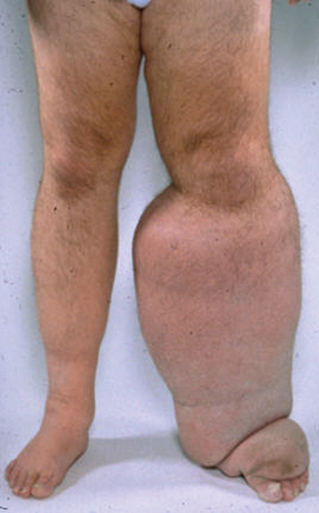Lymphedema is often described by stages. The first stage, also called the reversible stage, is manifested by edema of a pitting nature. The edema is soft, and the swelling typically resolves overnight with simple elevation of the affected limb. If the lymphedema remains untreated, it produces a progressive hardening of the tissues, which occurs secondary to scarring and the proliferation of connective and/or adipose tissue. This stage is known as irreversible or stage II lymphedema and is manifest by edema that does not resolve with overnight elevation. At this point, the skin loses its pitting character and begins to thicken. Stage III (or lymphostatic elephantiasis) is manifested by a tremendous increase in the volume of the affected limb. The hardening of the dermal tissues and papillomas that subsequently develop can give the patient the appearance of having elephant skin (Figure 1).
Lymphedema
Pathophysiology
Stay updated, free articles. Join our Telegram channel

Full access? Get Clinical Tree



